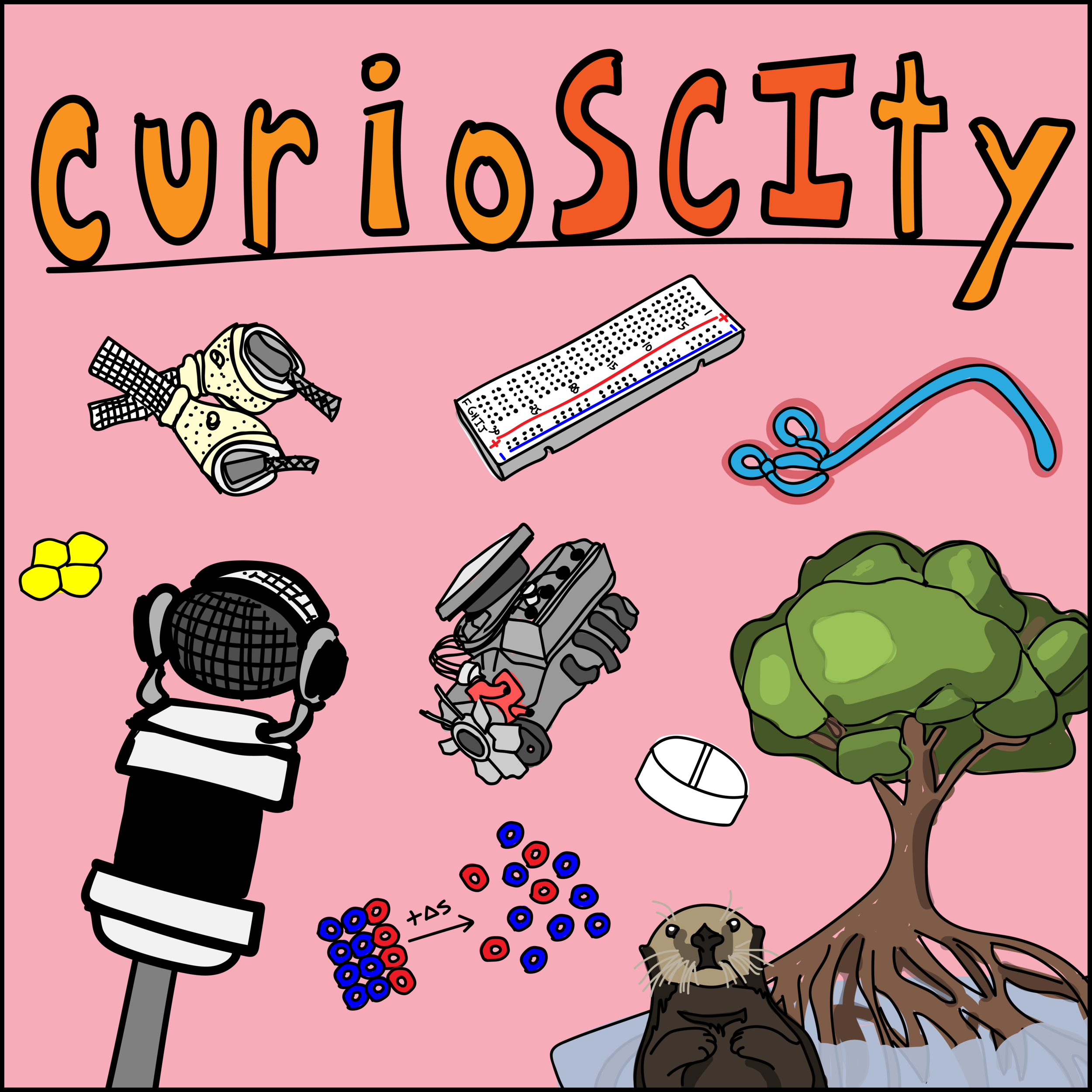90 - Science in Movies IV (w/ Allison Williams and TJ Russell!)
90. Science in Movies IV
It is common to be exposed to topics involving science in school, but this rarely is made as exciting as watching a sci-fi film. What creative liberties do filmmakers take to make their masterpiece, and what do they get right? Let’s learn to be scientifically conversational.
General Learning Concepts
1) Sam Raimi’s ‘Spiderman 3’:
a. Summary: Peter Parker has finally managed to piece together the once-broken parts of his life, maintaining a balance between his relationship with Mary-Jane and his responsibility as Spider-Man. But more challenges arise for our young hero. Peter's old friend Harry Obsourne has set out for revenge against Peter; taking up the mantle of his late father's persona as The New Goblin, and Peter must also capture Uncle Ben's real killer, Flint Marko, who has been transformed into his toughest foe yet, the Sandman. All hope seems lost when suddenly Peter's suit turns jet-black and greatly amplifies his powers. But it also begins to greatly amplify the much darker qualities of Peter's personality that he begins to lose himself to. Peter has to reach deep inside himself to free the compassionate hero he used to be if he is to ever conquer the darkness within and face not only his greatest enemies, but also...himself.
i. Physics of falling: Acceleration upon impact is 6 km/s2, approximately 600 g’s.
ii. Sand experiments: Total demolecularization of the sand. Using a particle accelerator to create a high energy field, the sand’s interatomic bonds would break down. This would somehow be weaponized.
iii. Sandman: He was capable of controlling his own density to make himself fluffy or rock hard.
https://www.popsci.com/article/2007-10/physics-spiderman-3/
https://scifi.stackexchange.com/questions/23278/what-experiment-were-they-running-on-the-sand
https://www.npr.org/templates/story/story.php?storyId=11141328
2) Jan de Bont’s ‘Twister’:
a. Summary: Bill and Jo Harding, advanced storm chasers on the brink of divorce, must join together to create an advanced weather alert system by putting themselves in the cross-hairs of extremely violent tornadoes.
i. Safety: Meteorologist Chris Cappella wrote about how there are risks being taken that no normal storm chaser would take.
ii. Scientifically reviewed, kinda: The National Severe Storm Laboratory helped the film’s screenwriters and hosted some of their actors. DOROTHY was based off of the TOTO project in the 1980’s (which never worked). GOES8, a mentioned satellite, was a real satellite from 1994 – 2004.
iii. The Fujita Scale: Not developed until 1971, but the first scene takes place in 1969.
iv. Green skies: Caused by light scattering through hail and water in a storm.
v. Holding on for dear life? Seems pretty improbable that would work in the first place, let alone ignoring the likelihood of being Final Destination’d by flying debris.
http://thevane.gawker.com/heres-everything-they-got-wrong-and-right-in-the-movi-1609968202
https://www.tornadotalk.com/the-fact-checking-of-the-film-twister-how-accurate-was-it/
3) Steven Spielberg’s ‘Jurassic Park’:
a. Summary: A pragmatic paleontologist visiting an almost complete theme park is tasked with protecting a couple of kids after a power failure causes the park's cloned dinosaurs to run loose.
i. Timeline: Most of the dinosaurs are from the cretaceous.
ii. DNA: You need the whole genome to recreate an organism, let alone the requirements to express factors that promote correct development. Michael Crichton, the author of the book, was very involved in this idea and simply explained it away with theoretical ideas. Still, the issue is that DNA doesn’t last forever: at some point, it will decay and leave missing chunks.
iii. Feathers: That’s something that is pretty well established at this point: most dinosaurs had some feathers, if not a lot.
iv. Eggs: Unfertilized ostrich or emu eggs. Would these be a close enough relative to gestate a dinosaur? This also gets into parthenogenesis: the female dinosaurs are reproducing all on their own! This is known with some reptiles, like the whiptail lizard.
https://www.bbc.com/news/science-environment-44293060
https://www.looper.com/163131/the-science-behind-jurassic-park-explained/
4) M. Night Shyamalan’s ‘The Happening’:
a. Summary: A science teacher, his wife, and a young girl struggle to survive a plague that causes those infected to commit suicide.


